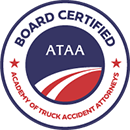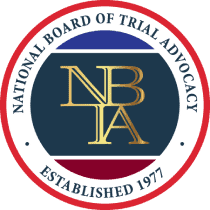What Does the NTSB Do?
When serious or unexplained accidents occur on our nation’s transportation system, you’ve probably heard about government organizations stepping in to investigate. This is exactly when the National Transportation Safety Board (NTSB) comes into play.
With plane crashes or other aviation incidents, you might see agents from the Federal Aviation Administration (FAA) in news videos at the crash site, and alongside those agents, there are usually members of the NTSB.
But what exactly does the NTSB do? What is its purpose, and how does it help to make our transportation system better?
Read on to find out more about this important agency.
Historical Role in Investigating Transportation Accidents
The NTSB was formed as an independent agency within the US Department of Transportation after President Lyndon Johnson signed the Department of Transportation (DOT) Act in 1966, which consolidated all United States transportation agencies.
Unlike the Civil Aeronautics Board’s Bureau of Aviation Safety, which was created in 1940, the NTSB’s job was to investigate accidents for all modes of transportation, not limited to aviation.
In 1974, the US Congress determined that the NTSB should be an independent entity separate from the US DOT. This was done to ensure that any investigation would be performed objectively, as the US DOT is a federal agency with regulatory and operational responsibilities that affect the efficiency and safety of the transportation system.
Types of Crashes the NTSB Investigates
Since its inception, the NTSB has investigated accidents, crashes, or other events in the following modes of transportation as well as the transportation of hazardous materials:
- Aviation
- Highway
- Marine
- Pipeline
- Railroad
- Hazardous materials
- Commercial space (added in 2022)
In March 2024, there were nine investigations opened for marine, highway, and railroad incidents, all of which remain open cases as of April 2024.
Perhaps one of the most notable recent marine investigations that is still ongoing is the Francis Scott Key Bridge collapse that occurred after the cargo ship Dali collided with it in the early morning hours of March 26, 2024.
How Does the NTSB Investigation Process Work?
As with any investigation, those that are performed by the NTSB may take a long time from the outset of the investigation to the probable cause determination. The NTSB attempts to complete its investigations within 12 to 24 months, but depending on the nature of the accident and any other factors that arise, it could take longer.
Every investigation follows the same general process, and often, the following phases may overlap or work hand-in-hand.
The Investigation Begins
When the NTSB is notified of a transportation incident that occurs on U.S. territory or in international waters when U.S. Flag vessels or U.S.-registered aircraft are involved, they decide whether or not to launch an investigation.
Generally, an investigation will begin in the immediate aftermath of an incident, but in some cases, the NTSB will become involved in an investigation after another agency requests assistance.
It’s important to note that if there is evidence of criminal activity relating to a transportation incident, other agencies must get involved and take the lead on the investigation. The NTSB does not investigate criminal activity but focuses solely on determining probable cause in a transportation incident.
Fact Gathering Occurs
In the case of a transportation accident, gathering as much data and information as possible is crucial to a successful investigation. An NTSB investigator or an investigative team (the Go Team) will travel to the accident site and begin gathering all the necessary information for a proper and thorough investigation.
This information will often include flight logs, interviews, and maintenance records.
The NTSB may bring in other agencies as parties to the investigation and in some cases may decide to hold an Investigative Hearing for those other organizations to assist with determining the facts about the incident.
There Is an Analysis of Data
Perhaps one of the most important phases of any investigation is analyzing the data and information that has been collected.
NTSB specialists will put together a sequence of events (or a timeline) to determine how the accident was caused. Each investigative team has an experienced writer-editor who knows the technical terminology for the particular mode of transportation involved in the incident.
The team will sit down with that writer and draft a report that describes the accident, their analysis, and their determination of probable cause. Once the report is completed, the team’s findings will be presented either to the modal office director or to a public Board meeting.
A Final Report Is Issued
Sometimes, multiple edits or drafts must be made to the investigative report.
However, as soon as the final accident report has been approved and adopted by the necessary authorities (such as the NTSB Board), the final copy of the report will be prepared for release to the public.
After the Investigation is Closed
Unlike other investigations, those performed by the NTSB don’t end with the determination of probable cause or the release of the investigative report.
NTSB investigations often reveal safety concerns or other issues that are addressed with Safety Recommendations to other agencies, state and local jurisdictions, companies, or any other group or organization involved in the specific mode of transportation.
After those recommendations have been given to the proper entities, the NTSB will maintain communication to ensure that those safety recommendations are being implemented. The NTSB will also advocate and enlighten the general public on any safety issues that were discovered during the investigation.
As you can see, the NTSB plays a vital part in maintaining our country’s transportation infrastructure and keeping all modes of transportation safe for travel.
So, if you were involved in an incident such as the Francis Scott Key Bridge or any other major transportation accident, you may see or hear from the NTSB.
Regardless of the NTSB’s involvement, if you’ve been injured in any type of serious collision with a truck, such as the gas truck fire and explosion in Wilmington, California in February 2024, know that the Trucking Injury Law Group is here to assist with your case.
We’re here to help.






